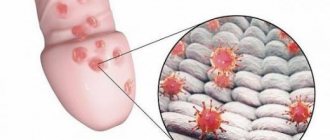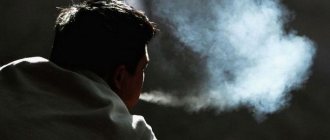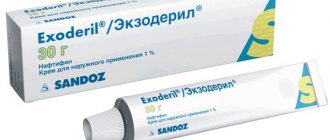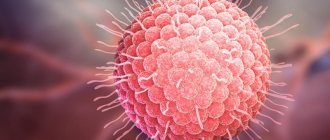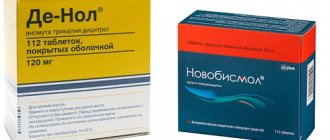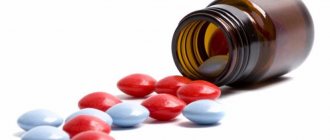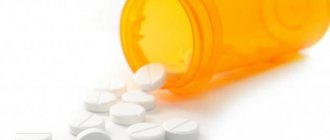A stroke or stroke is an acute disorder of cerebral circulation. It manifests itself quickly (within several hours or even minutes) by the manifestation of general cerebral or focal symptoms of neurological damage to the brain. We will consider the signs of this defeat below. If medical care is not provided to such a patient in a timely manner, death will inevitably follow. The patient must be urgently taken to a medical facility. Patients who are already prescribed and started treatment within the first two hours after the incident have a positive prognosis in most cases. If a stroke is diagnosed, treatment at home is possible only after discharge from the hospital. It gives its positive results at the recovery stage after an illness.
Types of stroke
Depending on the pathological processes occurring in the brain, there are three types of strokes:
- Hemorrhagic. Occurs as a result of hemorrhage, for example, when a cerebral aneurysm ruptures. This is the most dangerous condition, which most often leads to death.
- Ischemic. Blood flow to the brain tissue is disrupted as a result of blockage of the vessel, most often by a blood clot.
- Transient ischemic attacks. This is a condition in which there is a short-term disruption of blood circulation in the brain. Stroke-like symptoms occur and usually resolve within 24 hours.
Early treatment can help save the life of a person who has had a stroke and prevent serious consequences.
Management of patients during the recovery period
Rehabilitation after an ischemic stroke takes a lot of effort and time. This process occurs with the mandatory participation of the patient’s relatives. During the recovery period, it is important to improve the functioning of all affected organ systems.
For this purpose, they continue to take medications. Means that stimulate the restoration of neural connections are mandatory. A positive effect is observed with the use of vasoactive drugs. During the recovery period, doctors recommend Vinpocetine. The product is available in the form of a solution for injection or a concentrate for infusion. The most convenient form of administration is tablets. The components of the drug increase the intensity of blood circulation and also help lower blood pressure.
Patients who have suffered an ischemic stroke are recommended to take Piracetam. This is a nootropic drug. It is taken orally in tablet form, but intramuscular administration is possible.
The substance is included in the metabolic processes occurring in brain cells. Due to the intake, mental and motor activity increases.
All patients are prescribed amino acid preparations. Most often it is Glycine.
The medication is available in the form of tablets that are dissolved under the tongue. This is an inexpensive and effective drug for recovery after ischemic stroke.
The success of rehabilitation will depend on the extent of brain damage and the time of first aid. If it is possible to restore neural connections, then a return to the previous life is possible. In case of serious defects due to prolonged oxygen starvation, adaptation to new living conditions is necessary.
Why is this condition dangerous? What are the possible consequences of a stroke?
More than 2/3 of surviving patients become disabled. Various complications may develop:
- Partial (paresis) or complete (paralysis) loss of movement in certain muscle groups. Disorders can be expressed in varying degrees: from gait disorder to paralysis of the right or left half of the body. Some patients experience swallowing and speech disorders.
- Sensitivity disturbance and discomfort. When sensitivity is lost in certain parts of the body, discomfort, pain, and tingling may occur.
- Disorders in the cognitive sphere. Many patients experience deteriorating memory and thinking.
- Changes in behavior and disturbances in the emotional sphere. A person may become withdrawn, apathetic, and it becomes more difficult for him to control his emotions.
Serious brain damage can lead to the death of the patient.
Ischemic stroke
This type of stroke is caused by a blockage of blood flow through the arteries. Narrowing or complete blockage of arteries interferes with blood flow to the brain. This leads to the fact that the brain experiences oxygen starvation and the process of cell death begins.
With atherosclerosis, the risk of stroke increases several times, since in this disease normal blood flow in the arteries is interfered with by fatty deposits. If a patient has an abnormal heart rhythm, this can also cause a stroke.
Modern methods of treating stroke
From the moment symptoms first appear, time is critical. The patient should be examined by a neurologist as quickly as possible, and medications should be administered immediately.
Treatment depends on the type of stroke. Drugs that are suitable in some cases may be harmful in others.
In case of an ischemic attack, you need to immediately, in the first 4 hours, begin administering drugs that dissolve blood clots and prevent the formation of new ones. Aspirin and tissue plasminogen activator are used.
Sometimes surgical treatment methods are used: the introduction of tissue plasminogen activator directly into the cerebral arteries, stenting of vessels, removal of their inner lining affected by atherosclerosis.
During a hemorrhagic attack, it is necessary to reduce total blood pressure and blood pressure in the cerebral vessels. If the patient has previously taken medications that reduce blood clotting, the doctor may prescribe medications with the opposite effect or a blood transfusion.
Rehabilitation treatment is important. Patients who have suffered an attack are prescribed classes with a speech therapist, physiotherapy, physical therapy, mechanotherapy, and massage. This helps improve and speed up the recovery of impaired functions. Psychological help may be required.
During a stroke, seconds literally count. The prognosis depends greatly on how quickly treatment is started. If you suspect a vascular accident in the brain, you should immediately consult a doctor. Get help from a doctor in our neurological department by calling
Get a consultation with a doctor
Stroke is a dangerous condition that can lead to death and disability. The prognosis directly depends on how quickly the patient was examined by the doctor and treatment was started. Therefore, it is important to be able to recognize the first signs of this condition, and if they occur, you should immediately call a doctor.
General treatment
A patient with an ischemic stroke is prescribed bed rest for a long time. This prescription itself can cause a number of complications, such as bedsores, pneumonia, thrombophlebitis, and fluid imbalance. To prevent this from happening, the patient requires attentive daily care from a stranger.
In order to avoid pneumonia and any other stagnant processes in the respiratory system, you need to activate the patient as much as possible. Sit him down, propping him up with pillows, do breathing exercises, let him inflate balloons. If the patient is in a severe unconscious state and cannot move on his own, he must be turned at least on his side every two hours. Naturally, the room must be constantly ventilated.
Alas, after a major stroke, a long recovery is required, during which you not only need to inject injections and take pills, but also walk, talk, and move your arms again.
To prevent bed sores and various diaper rash from developing, you also need to carry out a whole range of hygiene procedures. This includes wiping the skin with an alcohol solution, constantly changing diapers and sheets, and washing the skin in the genital area with a disinfecting solution. Much attention should be paid to the bed on which the patient lies - it should have a special anti-bedsore mattress or at least a fairly hard mattress. The linen on the bed must be fresh; a diaper may be placed under the sheets.
If the skin is already damaged by developing bedsores, they need to be lubricated with a disinfecting solution and healing ointments. Separately, you should monitor the lumbar region; sometimes you should place a roller or a special rubber circle there.
Careful care of the patient's oral cavity also prevents the development of complications, such as stomatitis. Teeth should be brushed at least twice a day, after eating the mouth should be rinsed, and also wiped with a weak disinfectant solution, otherwise seriously ill patients may develop stomatitis. The same principle applies to washing the sick and caring for the eyes and nose.
But the worst consequences of bed rest are thrombophlebitis and dehydration. Due to the immobility of the limbs and being in one position without stress, the blood thickens, blood circulation is disrupted, and blood clots begin to form. Therefore, it is important to ensure that the patient drinks at least 2 liters of water per day with food and drinks, does at least minor physical exercises - raising his legs, bending them at the knees, or that he receives a massage or a complex of passive physical therapy when the patient’s limbs are a stranger bends him over. For varicose veins, you need to bandage your legs with an elastic bandage from the very first day of bed rest.
What are the first signs and symptoms of a stroke to look out for?
In some patients, the attack manifests itself clearly: they fall and lose consciousness. But it also happens that the signs are not clearly expressed, and it is difficult to recognize a catastrophe in the blood vessels of the brain. A person may think that another disease is just manifesting itself so strongly, for example, a hypertensive crisis.
Characteristic signs of stroke in men and women:
- Headache. It is quite strong, often accompanied by dizziness, nausea, and vomiting.
- Paralysis and numbness in different parts of the body. The problems can occur in one arm, leg, face, or entire half of the body. They are expressed to varying degrees, depending on which part of the brain is damaged and how severely.
- Speech impairment. The patient has difficulty pronouncing words and phrases, or has problems understanding someone else’s speech.
- Visual impairment. Double vision may occur, dark spots and “spots” appear before the eyes.
- Loss of coordination of movements, sense of balance, severe dizziness.
Even if the symptoms that a person has do not clearly indicate a stroke, but there is at least the slightest suspicion, you should immediately contact a neurologist. Better to play it safe. Call an ambulance.
Signs of a silent stroke
Due to the gradual development of silent stroke, the clinical picture is constantly updated with new signs as the severity of the process develops.
Initially, a person experiences signs that he most often does not pay attention to.
We have identified 9 characteristic signs of a silent stroke:
- A sharp loss of strength , which is perceived as a consequence of physical and mental fatigue.
- The feeling of vigor disappears due to the appearance of drowsiness during the day.
- 3-4 months before the onset of obvious symptoms, blood tests show increased levels of lipids, cholesterol and platelet counts .
- Within one month before the start of TI, the patient's memory process begins to fail .
- He can also detect sounds and smells that do not exist .
- Within a few days, a cough may appear even from a small sip of water , which is usually perceived by the patient as if he was choking.
- Immediately before a brain stroke, a person may have difficulty recognizing the appearance of loved ones .
- Speech becomes incomprehensible to others.
- Memory losses.
Signs that are taken into account in the differential diagnosis of silent stroke with other cerebrovascular disorders are presented in the table.
| Silent or ischemic stroke | Hemorrhagic cerebral hemorrhage | Microstroke (or transistor attack) | |
| Intracerebral | Subarachno ideal | ||
| In pathogenesis, the main role is played by blockage of the artery supplying the brain due to a blood clot or cholesterol plaque. This causes the death of an area of the medulla. | The artery ruptures, and as a result, blood floods the adjacent tissues. | Hemorrhage occurs between the tissues that cover the brain. | The disruption of the blood supply to the medulla is short-lived, as it lasts no more than 5 minutes. |
| It has a slow, sluggish onset. | Progresses rapidly over several hours. | It can develop rapidly and suddenly in a few minutes. | This type of pathology is characterized by a rapid onset and end of all clinical manifestations. |
| Headache occurs in rare cases, but can be acute. | The headache is severe, sometimes with loss of consciousness. | The feeling of headache and discomfort can lead to disorientation in space. | Severe dizziness is accompanied by noise and ringing in the ears. |
| An abrupt increase in pressure is a common clinical sign. | An abrupt increase in pressure is observed in most cases. | Pressure outside the norm is practically not observed. | Pressure fluctuations can occur both up and down. |
| In rare cases, there may be confusion. | Clarity of consciousness is most often lost. | The patient loses consciousness almost instantly. | Amnesia and confusion may occur. |
| Speech impairment is a common symptom for this pathological process. | Spoken speech impairment is almost always present. | Spoken speech impairment is a rare clinical finding. | Sometimes the deterioration of diction is accompanied by a violation of the act of swallowing. |
What can be done to identify symptoms of a stroke in a patient?
Some simple tests can help identify additional signs of stroke:
- Ask the patient to raise their hands. The arm on the affected side does not rise at all, or rises lower than the healthy one.
- Ask the patient to smile. One part of the face “smiles”, the other remains downcast.
- Ask the patient to stick out his tongue. The tongue deviates to the side.
- Ask the patient to bare his teeth. One half of the mouth is grinning, the other is closed.
- Ask the patient to frown. One eyebrow frowns more than the other, and asymmetry is noticeable.
- Ask the patient to repeat a phrase. The patient's speech is slurred and does not sound as usual.
If you notice any of these symptoms, there is a risk that the person is having a stroke. Call an ambulance immediately. Until the doctor arrives, the patient must not be left alone; he must be constantly under supervision - his condition may worsen at any time.
If suspicious symptoms occur, you should immediately consult a doctor at a neurology clinic. Remember: the minutes are ticking! The later the patient receives help, the worse the prognosis. Signs of a stroke in a man or woman require immediate medical attention. To get a consultation with a neurologist, contact us by phone.
Take care of yourself, book a consultation now
Various causes lead to ischemic and hemorrhagic stroke. Ischemic attacks are more common - in approximately 85% of cases.
The main causes of strokes:
Ischemic stroke
When the blood vessels in the brain become severely narrowed or blocked, ischemia occurs in the tissue—a disruption of blood flow. If this condition persists long enough, the nerve cells begin to die.
Main reasons:
- Narrowing or blocking of the lumen of blood vessels by a thrombus.
- Narrowing or blocking of the lumen of blood vessels by atherosclerotic plaque.
- Embolism is a condition when a blood clot or other particle enters the brain vessels through the bloodstream and clogs them.
Hemorrhagic stroke
Hemorrhage occurs in the brain tissue. As a result, blood flow to nerve cells is disrupted.
Main reasons:
- High blood pressure, hypertensive crisis (an attack during which there is a strong increase in blood pressure).
- Rupture of an aneurysm - a section of the artery wall in which there is protrusion and thinning.
- Long-term use of drugs that reduce blood clotting.
Treatment for stroke depends on its causes. Therefore, from the moment the first symptoms appear, it is very important that the patient is examined by a doctor as quickly as possible.
Differentiated therapy in the acute period
What is the treatment of ischemic stroke in the acute period? Specific medications are designed to eliminate the cause of the stroke. The drugs are divided into several groups depending on their effect on the body.
- Blood thinners. These remedies are necessary to prevent the formation of clots. The simplest and most widely used medicine from this group is Acetylsalicylic acid. You can replace this remedy with the drug Cardiomagnyl. It is an antiplatelet agent. The drug is based on a complex of magnesium hydroxide and acetylsalicylic acid.
- Anticoagulants. These drugs prevent blood clots from forming. In fact, they inhibit clotting processes. This group includes Fragmin and Heparin. Both medications are available in the form of an injection solution.
- Thrombolytics. These medications destroy fibrin fibers, helping to cleanse the bloodstream of blood clots. In the treatment of ischemic stroke, Dipyridamole, Ticlopidine, Clopidogrel are prescribed.
- Nootropics. An important element of therapy after a stroke. These drugs affect brain tissue. They activate the mechanisms of attention and memory. Nootropic drugs protect cells from hypoxia. As a rule, doctors recommend taking drugs such as Piracetam, Cerebrolysin, Aminalon, Picamilon.
- Calcium antagonists. These drugs are usually prescribed for those prone to hypertension. Taking them regularly normalizes blood pressure. Aminophylline, Nicergoline, Vasobral are considered popular drugs.
- Vasoactive agents. These medications are also designed to normalize blood pressure. Sermion, Vinpocetine, and Pentoxifylline are most often prescribed.
- Antioxidants. Such medications are prescribed when necessary to protect the body from free radicals. Mildronate, Mexidol, Emoxipin have these properties. A number of vitamins have similar functions. Doctors usually recommend vitamins E and C.
Complex therapy will speed up recovery processes. Ischemic stroke can occur in any hemisphere of the brain. Treatment regimens will be similar. The exact dosage and duration of therapy is determined by the attending physician.
As a result of an ischemic stroke, damage to nerve tissue occurs, which leads to the death of neurons. Ischemic stroke - consequences and residual effects, read in detail.
Read about the consequences of hemorrhagic stroke and life prognosis here.
Limb paralysis is one of the most common complications of stroke. To restore motor activity, massage is prescribed. The link provides examples of massage techniques.
What factors increase the risk of stroke?
If these factors are present in your life, your risks are increased:
- Unhealthy diet: when the diet is high in fat and sugar.
- High blood pressure. Normally, it should be between 120 and 80 mm. Hg Art. The higher these numbers, the higher the risk.
- Smoking, including passive smoking.
- Age over 55-60 years.
- Overweight, obesity.
- Heredity: If you have relatives who have had a stroke, you are at greater risk.
- Diabetes.
- High levels of “bad fat” cholesterol in the blood, atherosclerosis.
The pathology occurs more often in men than in women.
What measures help prevent stroke?
Prevention comes down to eliminating or minimizing the impact of all those factors that increase the risk of cerebrovascular accident. The recommendations are simple:
- Eat healthy.
- Maintain a normal weight.
- Try to completely give up smoking and other bad habits.
- Monitor your blood pressure. It is good to have a home blood pressure monitor and take measurements daily.
There are screening studies that help assess the condition of cerebral vessels and risks. Seeing the results of studies and analyses, our neurologists can give recommendations that will help prevent a catastrophe in the cerebral vessels.
According to statistics, up to 80% of strokes can be prevented. In addition to a healthy lifestyle, it is important for people from high-risk groups to visit a doctor on time, undergo examinations, and follow the recommendations of a neurologist. Get advice from a specialist at our neurology clinic “Medicine 24/7”. Contact us by phone.
A person who has had a stroke should be taken to hospital as quickly as possible. The earlier the correct diagnosis is made and treatment for a stroke is started, the higher the likelihood that the patient will survive and will not develop severe complications in the future.
For relatives and people who are nearby, it is very important to quickly understand what happened to the person and immediately call an ambulance. In English-speaking countries, doctors recommend using the abbreviation FAST (if you read it by letter, you get a word that is translated into Russian as “fast”), which makes it easy to remember what needs to be done:
- F – face drooping: “lowering of the face.” When a person tries to smile, it can only be done with one half of the mouth, while the other remains lowered.
- A – arm weakness: “weakness in the arm.” When you try to raise your arms up, one of them does not rise at all, or rises worse, less than on the healthy side.
- S - speech difficulty: “difficulty with speech.” It is difficult for a person to understand someone else’s speech, to repeat phrases, he speaks indistinctly, his tongue becomes slurred.
- T – time: “time”. It's important to act quickly. If one of these signs occurs, you should immediately call an ambulance.
Stroke Prevention
The population of our planet has already exceeded seven billion. Moreover, about one billion of them are found to be at risk for stroke.
These data are, of course, frightening, so it is worth thinking seriously about how we can reduce the death rate from stroke. At the same time, we must not forget that the number of this disease, to our great chagrin, is increasing.
It is also important that a person who has suffered a stroke may again end up in a hospital bed. This may occur during the first few years after the disease. And to avoid this unpleasant fate, it is worth constantly carrying out appropriate stroke prevention. Moreover, this disease occurs again in twenty percent of people in the same year after the first disease. And in eighteen percent, the disease recurs within three years. But for the vast majority of people who have their first stroke, it can occur within five years. Apparently, such terrible statistics are most likely due to the fact that doctors were unable to promptly identify the causes of the disease the first time and, accordingly, were unable to correct this situation.
Note that a recurrent stroke can occur due to arterial hypertension, atherosclerosis of blood vessels with high cholesterol levels, coronary heart disease and heart failure. Of course, smoking, limited physical activity, diabetes, and, of course, alcohol abuse lead to stroke. But we talked about this a little earlier.
Indeed, for good prevention of this disease, in order to prevent a recurrent stroke in advance, a person must, first of all, radically change his old lifestyle, i.e. once and for all you need to give up all bad habits and increase your physical activity significantly. In addition, it is recommended to conduct an examination to finally determine what exactly affected the circulatory disorder, and thus cure the disease that led to the stroke.
However, doctors are confident that the vast majority of cases can be prevented by making certain changes to your daily diet.
Under no circumstances should you eat fatty foods, especially animal fats. You should not overeat potatoes and baked goods. It is not recommended to eat sugar, jam and sweets.
But, say, consuming a product such as fish may quite possibly help avoid this disease. Stroke primarily occurs in people who abuse bad habits, but direct consumption of fish, which contains fatty acids, undoubtedly leads to a reduction in risk. These substances are excellent for normalizing blood pressure and lowering cholesterol.
As for coffee, it contains antioxidants. Such a drink is not able to allow the accumulation of cholesterol throughout the body. Thus, drinking coffee stops the formation of blood clots in the brain. Simply put, if a person drinks three to four cups daily, the risk of contracting the disease is reduced by approximately seventeen percent. But we must not forget that consuming this drink is beneficial only in limited doses.
Eating pears and apples also provides real support to the body in preventing disease. If only because it greatly enhances the immune system, creating the body’s natural defenses.
In addition, tinctures of medicinal herbs are also very useful. One of them is from marina root. For the recipe you will need two teaspoons of crushed root and one glass of boiled water. After the mixture, it should sit for four hours. When this process is over, the solution is filtered. The patient needs to consume it three times a day, two tablespoons.
For prevention, it is advisable to use mummy, which is diluted in tiny doses.
Another remedy is to make oil from bay leaves. In order to prepare it, you need to take three tablespoons of chopped bay leaf and pour this mass with one glass of unrefined sunflower oil. Then the mixture is infused for one week. When the tincture is ready, it must be strained and smeared on the paralyzed areas twice a day.
Note that these three treatments are usually carried out within a year. Moreover, every month the patient needs to rest from such prophylaxis. Moreover, usually one procedure should last ten days. The effectiveness of such treatments is very high. In any case, for many who were paralyzed in their lower limbs, the functionality of their legs returned and people finally began to walk.
Reviews from our patients
- “Treatment has been carried out, after which I am taking my mother home”
“Treatment has been completed, after which I am taking my mother home” July 18, 2020Our clinic often receives patients who have been refused treatment in public medical institutions. We are not afraid to take on difficult cases and always try to help as much as possible. The patient's mother had a stroke. The daughter did not know what to do, because the regular ambulance doctors did not hospitalize them. “Medicine 24/7” accepted them, carried out examinations and treatment. Now the daughter is going home with her mother. "We…
read more
- “Now I know, a stroke is not the end of life...” June 27, 2018
You never know what lies ahead. I went in for sports all my life, didn’t smoke, drank only on holidays, and went to the sea in the summer. And then my whole life collapsed. Stroke. It would be better to die than to remain like this for the rest of my life. I couldn’t really speak, I was ashamed to go out into the street, everyone was looking around and looking at you, the place...
read more
- Thank you for your human kindness, help and friendship August 14, 2020
Thanks to the daily care of sister-hostess Vera Alexandrovna, an unusually comfortable environment has been created in the department. Many thanks to the barmaid Lena and Sveta for their sensitive and responsive attitude. Everything is always delicious and perfect! Thank you for your human kindness, help and friendship to all the clinic nurses. Always perfectly clean and comfortable! Special thanks to the super professional rehabilitation doctors Kirill and...
read more
Medical examination
If a stroke is suspected, the doctor must act quickly. Ambulance team specialists conduct an examination, identify characteristic symptoms, measure blood pressure, and conduct an ECG with a portable device. The patient is administered the necessary medications and immediately transported to the hospital.
At the hospital, the patient is again promptly examined, placed in the intensive care unit, treatment is started and an examination is prescribed.
Remember: only a neurologist can correctly diagnose a stroke and help. The patient should be immediately taken to the clinic. Do not waste time and do not self-medicate. A person's life may depend on how quickly you act.
Instrumental methods for diagnosing stroke
The following tests are prescribed in the hospital:
- Angiography of cerebral vessels. A special contrast agent is injected into the vessels, then X-rays are taken. The photographs show the outlines of painted vessels. The study is usually carried out if there is a suspicion that the stroke occurred as a result of hemorrhage from an aneurysm or arteriovenous malformation.
- MRI and CT. They help detect areas of brain tissue damage, hemorrhages, tumors and other pathological changes.
- Electrocardiography. It is carried out to diagnose arrhythmia, blood clots in the cavities of the heart, which could come off, penetrate into the vessels of the brain and cause a stroke. Sometimes daily ECG monitoring is prescribed to detect arrhythmia.
- ECHO-cardiography (ultrasound of the heart). Using ultrasound, you can examine the cavities of the ventricles and atria and detect blood clots.
- Ultrasound of the carotid arteries. Allows you to detect atherosclerotic plaques and blood clots.
Bed rest and patient position
For the first time after damage to the blood vessels of the brain, the patient should be in bed. The rehabilitation period ranges from three weeks to several months, with the restoration of motor functions. Already from the 4th week it is allowed to take a sitting position, and from the 5th week, using special devices - walkers, sticks, in the absence of dizziness, begin to walk.
How to place a patient in bed after a cerebral vascular infarction? It is important to maintain muscle tone in the paralyzed limb. This can be done by following several rules in different positions:
- Supine position – abduct the paralyzed arm and place a bolster between your shoulder and torso to maintain a natural position. Also place a rolled up towel or cushion under your slightly bent knee. In general, try to avoid this position as it causes muscle spasms.;
- On the paralyzed side, the arm or leg affected by the heart attack should be extended and the healthy one bent. Be sure to place a bench under the hanging arm, palm up, so as not to cause dislocation of the joint;
- On the healthy side, the affected limbs should be brought forward to provide support.
The mattress should be moderately hard. Try to place two pillows on the sides of your head when lying on your back, so that your face is always facing up, and your palms too. Remember that the doctor most often explains complications during home treatment by lack of movement. To avoid thrombosis, perform exercise therapy and use elastic stockings. For bedsores - the patient should be turned over every 2-3 hours, changing position.
Lying on the paralyzed side is beneficial as it helps revitalize the nerve endings.
What is the importance of modern diagnostic methods in stroke prevention?
If you undergo screening on time, know your risks and take the necessary measures, the risk of stroke can be greatly reduced. Research shows that this condition can be prevented in 80% of cases.
Older people need to regularly visit a doctor, take a general and biochemical blood test, and undergo studies that help assess the condition of the cardiovascular system and cerebral vessels. This is an important stroke prevention measure.
In our neurological clinic you can undergo an examination and receive recommendations from a specialist doctor. It doesn't take much time, but it helps greatly reduce risks. Many people who are bedridden due to severe complications of a stroke could still lead a fairly active life, work, do their favorite things, and enjoy spending time with their children and grandchildren. Take care of your health in time. Make an appointment with a neurologist.
Get a consultation with a doctor
Nerve cells can survive without oxygen for only a few minutes, so first aid for a stroke should be provided by a doctor as quickly as possible. The earlier treatment for a stroke is started, the fewer brain cells will die, and this directly affects the prognosis.
Medications help stabilize the patient’s condition, prevent serious complications, and in some cases, save lives.
But another area of treatment is also of great importance - rehabilitation of the patient after a stroke. After all, a catastrophe in the brain has already occurred; some neurons have already died. This leads to certain neurological disorders and affects the patient’s subsequent life.
Why is rehabilitation needed? Ideally, in order to completely restore the impaired functions of the nervous system. If this is not possible, we need to make sure that the person’s subsequent life is as full as possible, so that he can take care of himself, do business, do not experience psychological discomfort, and can feel like a full-fledged member of society.
A stroke affects all areas of a person’s life: his physical and psychological state, ability to cope with everyday activities, social activity, financial situation (if previously he could work and provide for himself, but is now bedridden). Rehabilitation can continue for years. The most complete recovery after a stroke can only occur with the participation of neurologists and other specialists.
Treatment with folk remedies
Considering stroke therapy using folk remedies, we can say that there are recipes that help rehabilitation after an attack, but it will not be possible to do 100% without drug therapy.
Since stroke is a disease from the category of consequences, which is caused as a result of deterioration of the condition of blood vessels and the heart, treatment of the consequences of a stroke should be aimed at restoring the cardiovascular system in the first place.
To get rid of a stroke, treatment with folk remedies after a stroke is also encouraged, and, naturally, this stroke treatment is mainly carried out at home.
One of the methods of folk home treatment is the treatment of stroke with pine cones, which is the use of extracts of young pine cones.
Young pine cones contain a large amount of useful substances that are very necessary for the human body. And it would be good if they were used not as a restorative treatment after a stroke, but in order to prevent the risk of a stroke.
Pine cone extract can be added to water when bathing in the bath, or rubbed on the skin (if the tincture was made with oil). You can pour honey into young pine cones and create a healing delicacy.
What activities are carried out at the stroke rehabilitation center?
Activities that can be carried out to restore impaired functions of the nervous system and adapt a person to new living conditions:
- Classes with a speech therapist. Required for patients who have problems with speech and communication. If speech cannot be restored, the patient will have to learn to communicate with others in a new way, using gestures and facial expressions.
- Physiotherapy. It can be done independently with an instructor or using special devices for mechanotherapy. The patient must learn to move independently and take care of himself, at least to a minimum extent.
- Physiotherapy, massage. They are carried out as prescribed by the attending physician to restore impaired nervous functions.
- Help from a psychologist. Many patients experience depression and have emotional disturbances.
It is important to correctly draw up a rehabilitation program depending on what functions were impaired and how severely. In some patients, recovery occurs quite quickly, in others it takes years. Specialists from a rehabilitation center can provide competent assistance after a stroke. Typically, a team consisting of doctors, instructors, and other professionals works with the patient.
In order to ensure the fastest and most complete recovery after a stroke and an acceptable quality of life, it is advisable to find a center for neurology and rehabilitation after a stroke in Moscow, where all the specialists are available and the full range of necessary measures is carried out. The earlier rehabilitation treatment is started, the better results can be achieved. Make an appointment with our neurologist by phone.
The material was prepared by Lev Gennadievich Kamyshev, a neurologist at the Medicine 24/7 clinic.


